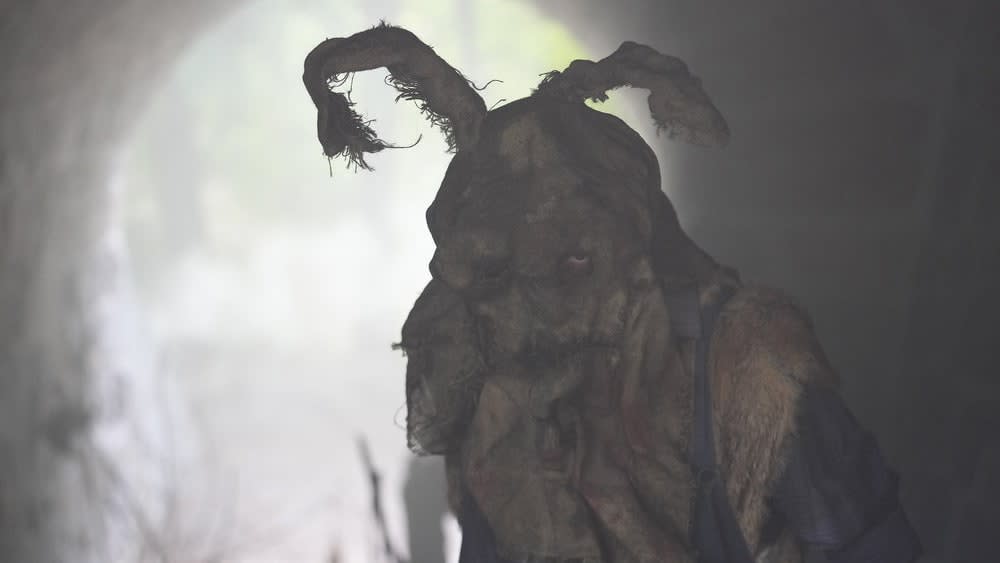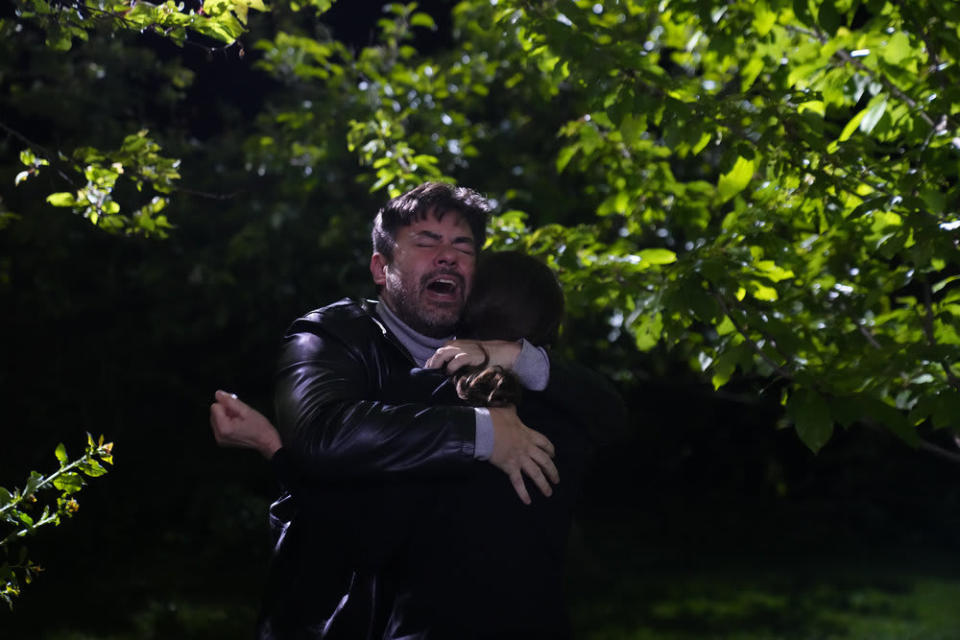‘John Carpenter’s Suburban Screams’: The Master of Horror Ruins His Reputation

- Oops!Something went wrong.Please try again later.
- Oops!Something went wrong.Please try again later.
The master of horror lends his name, a musical theme, and—for one pitiful episode—his “remote directing” talents to John Carpenter’s Suburban Screams, a work of verité schlock that sullies his reputation and insults its audience’s intelligence. Premiering on Peacock in time for Halloween, this six-part affair (out Oct. 13) is a subpar hybrid of Unsolved Mysteries and the various small-screen paranormal series that recount tales of the unknown via unconvincing testimonials and even less believable dramatic recreations. It may announce, at the start of each installment, that “The Following Is a True Story,” but only the most gullible will buy the majority of what this dopey endeavor is selling.
For pure embarrassing hilarity, nothing in John Carpenter’s Suburban Screams tops its third hour, “The House Next Door,” in which a man relays his experiences in 1986 Jamul, California, living across from a haunted abode that was home to his first adolescent love, Jennifer, as well as his teenage crush, Lisa, whose dad was a dentist.
His saga is part Rear Window and part ’80s teen horror film, replete with people being pulled back into the dark by unseen forces and a synth score borrowed from Stranger Things. Its every aspect is a genre cliché, and if that weren’t bad enough, the storyteller’s name is Dr. Torrence (as in Jack, from The Shining), his homicidal adversary tries to break down a bathroom door with an axe in an attempt to kill his harried wife and kids, and in that sequence, the show literally mimics Stanley Kubrick’s compositional framing. Rarely has a “reality” series so brazenly owned up to its own fictitiousness—and that’s without mentioning that Dr. Torrence’s friend (the sole other person who’s interviewed in this chapter) is named, I kid you not, Mike Myers.
"In our suburbs, evil lurks behind closed doors. True stories so terrifying because the horror is real. You’ll never look at your neighbors the same way again,” intones the acclaimed director during the show’s opening credits. Unfortunately, there’s only one legitimate tale in the entire absurd lot: “A Killer Comes Home,” about the reign of terror perpetrated by Canadian serial killer Allan Legere in 1980s Miramichi. That installment is driven by the talking-head remembrances of journalists Rick McClain and David Cadogan, who found themselves not just covering this story but in the crosshairs of Legere, whom they state was intent on exacting revenge against them for their coverage of his crimes. As with everyone involved in the series, McClain and Cadogan’s line readings are as exaggerated as the format will allow. Yet at least what they have to say is verified by archival news clips and newspaper headlines.

Not so with anything else in John Carpenter’s Suburban Screams, whose five other narratives are as credible as a $3 bill. In “Kelly,” an Ontario man known as Dan—last names are infrequently denoted—creates and uses a homemade Ouija board as a fun lark, and is immediately contacted by his girlfriend’s cousin, Kelly, who was into drugs and vanished without a trace some unspecified time ago. Increasingly obsessed with communing with Kelly, Dan declares, “There’s something that’s starting to happen here!” From what’s depicted, that something is abject nonsense. As in so many episodes, dramatic recreations don’t just bring Dan’s nightmare to life; they embellish it with scary-movie sights, sounds and scenarios—visitations from ghouls; harrowing encounters with the supernatural; jolt scares—that are seldom actually described by narrators. It’s lots of make-believe surrounding an implausible anecdote about the great beyond.
The same is true of “Cursed Neighborhood,” in which a wife and mother relocates her clan to Charles County, Maryland, only to suffer a series of strange incidents that the show implies are the handiwork of nineteenth-century settler ghosts who once fought Native Americans on the land. However, while the episode boasts multiple scenes of those spirits menacing the family, no one claims on the record that they happened; instead, most of the chatter is about how the woman’s spouse broke his feet, had an acne outbreak on his back (here imagined as maggot-y sores), and became “possessed”—apparently, by alcoholism. John Carpenter’s Suburban Screams’ form is so transparently disingenuous and manipulative that there’s no way to take it seriously, and that extends to interviews with speakers who recite the corniest, most scripted dialogue imaginable.
‘Totally Killer’ Proves We Should Let Julie Bowen Kick Ass More Often
“The Bunny Man” concerns a Fairfax, Virginia legend about a psycho roaming the region in a bunny costume, and what’s presented resembles a cross between your average C-grade Jack the Ripper movie (or Tim Burton’s Sleepy Hollow) and The Texas Chainsaw Massacre (with a sprinkling of Donnie Darko thrown in for good measure).
“Phone Stalker,” helmed remotely by Carpenter from his couch, features a woman named Beth talking about the harassment she endured over the phone—via profane calls, texts and images, including a dick pic—courtesy of an unknown male baddie. Like the show’s other episodes, Beth’s story is marked by listless dramatic-interlude events (including being menaced by a shadowy fiend in a nighttime shed) that aren’t corroborated by her or her friends’ commentary, thereby calling the entire thing into question. In those staged moments, the actor playing Beth also vainly strives to affect her Long Island accent, which further turns the proceedings into a clunky joke.

As when a Fairfax, Virginia historian identified as Cindy says that she “honestly” doesn’t know if the area’s current Bunny Man is the same one that frightened citizens one hundred years earlier, John Carpenter’s Suburban Screams is unserious to the point of ridiculousness—a situation compounded by its affected air of solemnity. Worse, however, it’s crushingly boring. Save for its Allan Legere segment, the series spins threadbare yarns that are devoid of originality or satisfying conclusions, with each one petering out in painfully deflating fashion. At every turn, it takes hackneyed horror-cinema tropes and pretends that they’re the genuine article.
Despite being this anthology’s main selling point, Carpenter seems to have had little active hand in John Carpenter’s Suburban Screams; even the music he provides (co-written with Cody Carpenter and Daniel Davies) barely amounts to more than a snippet. That’s probably just as well, given that this fiasco can best be summed up by a father exclaiming, “This is obscene!”
Liked this review? Sign up to get our weekly See Skip newsletter every Tuesday and find out what new shows and movies are worth watching, and which aren’t.
Get the Daily Beast's biggest scoops and scandals delivered right to your inbox. Sign up now.
Stay informed and gain unlimited access to the Daily Beast's unmatched reporting. Subscribe now.

